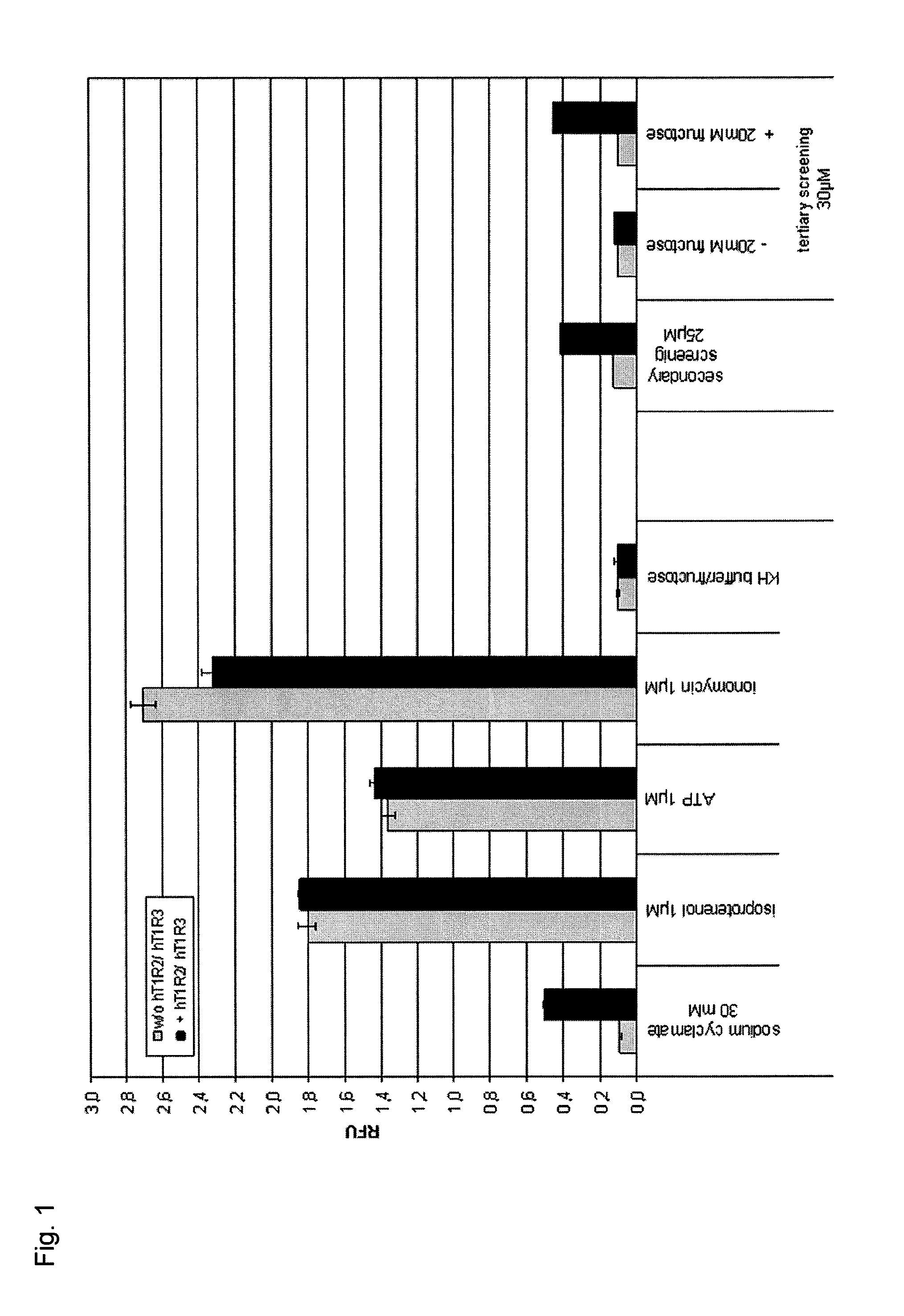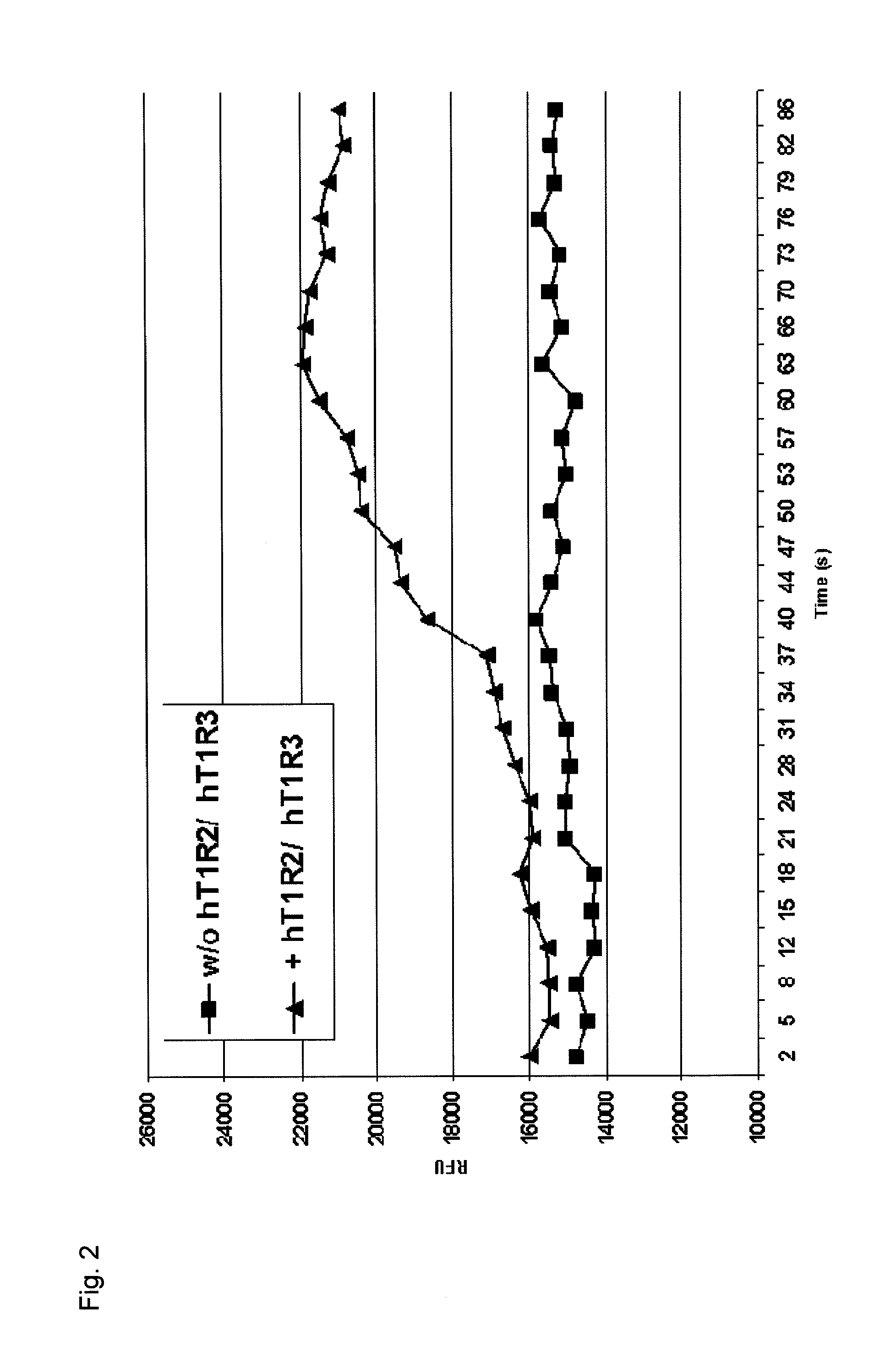Sweetness enhancer, sweetener compositions, methods of making the same and consumables containing the same
a technology of sweetener composition and enhancer, which is applied in the field of sweetener composition, sweetener composition, method of making same and consumables containing the same, can solve the problems of less than desirable sweetness profile, prohibitively expensive non-caloric or low-caloric sweeteners, etc., and achieve the effect of increasing the sweetness level and increasing the sweetness level
- Summary
- Abstract
- Description
- Claims
- Application Information
AI Technical Summary
Benefits of technology
Problems solved by technology
Method used
Image
Examples
example 1
In Vitro Identification of Rosmarinic Acid as a Sweet Taste Modulating Substance—Detection of Sweetness Enhancer Activity of Rosmarinic Acid in a Recombinant Human Taste Receptor T1R2 / T1R3 Dependent Cell Based Assay
[0298]Rosmarinic acid has been identified in the screening phase as a sweet taste modulating substance by cell based assay analysis, acting as a fructose enhancer in vitro.
1.1 Description of the General Method
[0299]In wild type taste cells, e.g. in human taste buds, signal transduction is accomplished by the G-proteins gustducin and / or by G-Proteins of the G alpha-i type. Encountering sweet ligands, the heterodimeric human taste receptor T1R2 / T1R3 reacts with induction of second messenger molecules, namely either the increase of the cAMP level in response to most sugars or the increase of the calcium level in response to most artificial sweeteners (Margolskee, 2002; J. Biol. Chem. 277, 1-4, which is incorporated by reference in its entirety).
[0300]To analyze the function ...
example 2
Taste and Spit Assay with Rosmarinic Acid
[0325]The taste of a sample of rosmarinic acid with regard to sweetness and fructose enhancing features was assessed by using a panel of trained sensory evaluators experienced in the sweet taste estimation procedure. 5 individuals were asked to taste the quality of single samples of 10 ml volume.
2.1 General procedure
[0326]Panelists were asked to take a sample of the liquid to be assessed (20 μM test substance rosmarinic acid in 0.5% ethanol) into the mouth and after some time allowed for taste perception to spit the sample out completely. Subsequently, the panelists were asked to rinse their mouth well with water or black tea to reduce any potential carry over effects. The tasting of a sample could be repeated if required.
2.2 Taste and Spit Phase I—Qualitative Assessment
[0327]In a first descriptive test 5 individuals were asked to taste the quality of single samples of 10 ml volume (maximum 3 subsequent samples). The samples were served at am...
PUM
 Login to View More
Login to View More Abstract
Description
Claims
Application Information
 Login to View More
Login to View More - R&D Engineer
- R&D Manager
- IP Professional
- Industry Leading Data Capabilities
- Powerful AI technology
- Patent DNA Extraction
Browse by: Latest US Patents, China's latest patents, Technical Efficacy Thesaurus, Application Domain, Technology Topic, Popular Technical Reports.
© 2024 PatSnap. All rights reserved.Legal|Privacy policy|Modern Slavery Act Transparency Statement|Sitemap|About US| Contact US: help@patsnap.com










